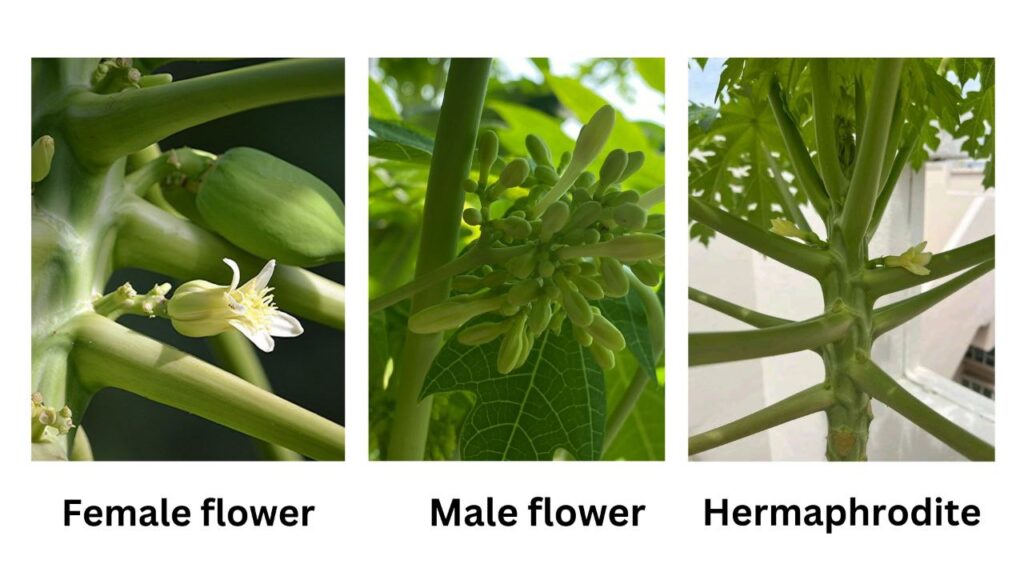Papaya (Carica papaya L.) is one of the very popular tropical fruits which is delicious, quick growing, high yielding and perennial herb falls under the Caricaeae family. It is an ideal fruit crop for kitchen gardening in backyards of homes as well as orchards. It is also grown as a filler plant in orchards.

Papaya is polygamous and has staminate, pistillate, and hermaphrodite flowers (containing both male and female parts).The papaya plant is usually dioecious. Some plants bear male flowers, some bear female flowers.
Occasionally, plant with hermaphrodite flowers may also occur.The proportion of plants with male, female and hermaphrodite flowers varies with the variety. The flowers of ‘Coorg Honey dew’ cultivar are either female or hermaphrodite and hence every plant yields fruits.
Papaya starts flowering in 5-6 months after planting. When the sex of the plant is identified, surplus male plants may be removed, keeping one male plant for every 10 female plants, as pollinizers.
Different type of flowers in Papaya
Male (staminate)
Spoon shaped buds with long, narrow tubular flowers on long peduncles (60-100 cm long) from leaf axil petals fused at base and containing anthers in two series of five, one series longer than the other. They have rudimentary pistils, no stigma and are non-functional. It cannot develop into fruits. The flowers are yellowish and 2-4 cm long.
Hermaphrodite (bisexual)
These are bisexual flowers having both male and female organs, they are creamy white in colour, big sized flowers, with stalks (peduncle) less than 25 cm long. Petals of these type of flowers are fused from one fourth to three fourths of their total length, ten anthers are observed, five long and five short. The ovary is long, which contains five or more carpels. The form of fruits varies from cylindrical to pear-shaped.
Female (pistillate)
Large yellow conical flower of conical shape when closed arises closer to the trunk, and when opened, its five petals spread from the base. The ovary is large, circular and smooth or slightly undulated, which swells and develops into a papaya fruit. The fruit produced by such flowers are spherical or ovoid in shape.
In papaya change in sex expression is influenced by climatic factors like low temperature favouring the production of perfect flowers. The tendency to produce male flowers seems to increase at high temperatures.
It was observed that fertile hermaphrodite types had some pistillate flowers which showed male tendency in summer and female tendency in winters. Seedless fruits are developed from pure female flowers which are not cross-pollinated.
Pollination studies have shown that
Pistillate (female) flowers pollinated by staminate (male) flowers give equal numbers of male and female progeny
Pistillate flowers pollinated by pollen from bisexual (hermaphrodite) flowers give an equal numbers of female and bisexual progeny
Bisexual flowers either self or cross-pollinated with other bisexuals give a ratio of one female to two bisexual progeny
Bisexual flowers pollinated by staminate flowers produce equal numbers of female, male and bisexual progeny.
The chief pollinators of papaya are Hawkmoths and a few skipper butterflies. Honeybee also plays a role in pollination. Female flower that hasn’t been pollinated and thus fails to set fruit, aborts naturally.
